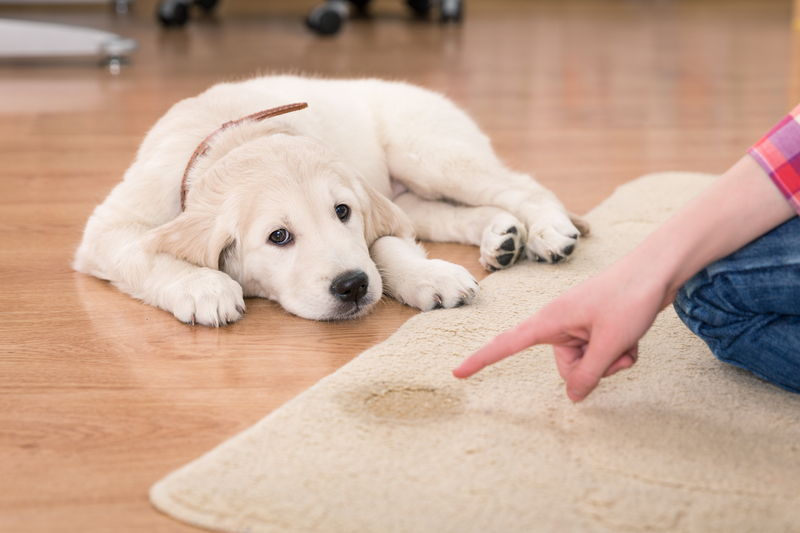Master Curtain Cleaning with These Steps: The Ultimate Guide
Don't let dusty or stained curtains drag down the look and air quality of your home. Knowing how to clean curtains and maintain them can keep your living space fresh, bright, and beautiful. In this comprehensive guide, you'll discover everything you need to master curtain cleaning. Whether you're looking for tips for deep cleaning, regular dusting, or special care for delicate fabrics, these steps will help you achieve spotless results every time.

Why Proper Curtain Cleaning Matters
Many homeowners overlook curtain maintenance, but clean curtains are key to a healthy and inviting home environment. Over time, curtains collect dust, allergens, pet hair, pollen, and grime. Without proper cleaning, these pollutants can:
- Reduce air quality in your living spaces
- Trigger allergies and asthma symptoms
- Encourage ``mold`` and bacteria growth
- Dull the color and beauty of your drapes
- Shorten the lifespan of your window treatments
Regular curtain cleaning not only freshens up your windows but also helps your curtains last longer and look better. Let's dive into the step-by-step process so you can master the art of curtain cleaning today.
Step 1: Know Your Curtain Fabric
Before you even think about curtain washing, take time to identify your curtain material. This determines the cleaning method and products you should use to avoid damaging the fabric.
Common Curtain Fabrics and Their Care
- Cotton & Linen: Usually machine-washable but may shrink if hot water or dryers are used.
- Polyester blends: Generally durable and easy to clean by machine or hand.
- Silk & Velvet: Require gentle, specialized care. Dry cleaning is often safest.
- Lace or Sheer Curtains: Delicate materials that benefit from gentle hand-washing or mesh laundry bags.
- Blackout Curtains: May have a special lining that can be damaged by washing--spot clean or check manufacturer's instructions.
Tip: Always check the care label or manufacturer's instructions on your curtains before cleaning.
Step 2: Gather Your Curtain Cleaning Supplies
The right tools make the curtain cleaning process easier and more effective. Here's what you'll need for most curtain cleaning projects:
- Vacuum cleaner with upholstery or brush attachment
- Mild detergent or curtain-specific cleaner
- Clean microfiber cloths and sponges
- Bathtub or large basin for hand washing
- Mesh laundry bags (for delicate drapes)
- Steamer (for deep cleaning and wrinkle removal)
- Iron (for final touch-ups, if needed)
Optional: Lint roller, stain remover, rubber gloves, step ladder for high windows.
Step 3: Regular Maintenance - Dusting and Vacuuming Curtains
For mastering curtain cleaning, start with routine dust removal. Dust and debris can build up quickly, so include curtains in your weekly or bi-weekly cleaning schedule.
How to Vacuum Curtains Effectively
- Use a vacuum cleaner with a soft brush or upholstery attachment.
- With curtains still hanging, gently vacuum from top to bottom, paying special attention to folds and hems.
- For stubborn spots, use a lint roller to pick up pet hair and finer particles.
- Don't forget the curtain rod, hooks, and windowsills!
Frequent vacuuming prevents dust from settling deeply into the fabric.
Step 4: Removing Curtains for Deep Cleaning
About 2-4 times a year (or whenever you notice stains, odors, or heavy buildup), it's time for deep curtain cleaning. Follow these steps to remove your curtains safely:
- Take Down Carefully: Unhook or slide off the curtain from the rod. Remove rings, hooks, and any hardware.
- Shake Out: Take the curtains outside and give them a gentle shake to loosen dust and debris.
- Check for Stains: Inspect for spots or marks that may need pre-treatment.
Step 5: Spot Cleaning Stains and Marks
Whether you're washing drapes at home or using professional curtain cleaning services, dealing with tough stains is crucial.
How to Treat Common Curtain Stains
- Food/Beverage Stains: Blot with a damp microfiber cloth. Apply a mild soap solution and dab gently--never rub.
- Grease or Oil: Sprinkle with cornstarch or baking soda to absorb grease, let sit, then brush off and sponge with mild detergent.
- Water Stains: Use distilled water and a clean cloth. Gently blot and allow to air dry.
- Mold or Mildew: Mix one part white vinegar with four parts water and blot the stain. Dry thoroughly to discourage regrowth.
Note: Always patch-test a small, hidden area of curtain fabric before applying any stain remover.
Step 6: How to Wash Curtains--By Hand or Machine
The most common curtain cleaning methods are machine washing and hand washing. Choose the one best suited to your curtain's fabric and care label instructions.
Machine Washing Curtains
- Prepare Curtains: Remove hardware and shake out dust.
- Use Gentle Cycle: Place curtains in a mesh bag for delicate fabrics. Wash on a cold, gentle cycle with mild detergent.
- Do Not Overload: Curtains need space to move freely for a thorough clean.
- Hang to Dry: Avoid tumble drying, which may shrink or damage fabric. Re-hang curtains while damp for easier wrinkle release.
Hand Washing Curtains
- Fill your bathtub or basin with cold or lukewarm water.
- Add gentle, color-safe detergent. Stir to dissolve.
- Fully submerge curtain panels. Swirl gently with your hands.
- Let soak for 10-20 minutes, then rinse well with cool water.
- Gently press out excess water--do not wring or twist.
- Hang to dry, smoothing out creases and pleats.
Dry Cleaning Curtains
- For silk, velvet, wool, or heavily lined drapes, professional dry cleaning is usually required.
- Always inform your dry cleaner if the curtains have special linings or embellishments.
Step 7: Steaming and Ironing for a Fresh, Wrinkle-Free Finish
After cleaning, your curtains may be creased or wrinkled. Steaming is a safe and effective way to remove wrinkles and refresh fabric:
- Use a handheld steamer: Hang the curtain and move the steamer slowly from top to bottom.
- No steamer? Use an iron on the lowest safe setting, with a pressing cloth to protect delicate fabrics.
- Hang curtains promptly after cleaning--many wrinkles will fall out naturally as the fabric dries.
Step 8: Rehanging and Maintaining Crisp Curtains
Once fully dry and wrinkle-free, it's time to rehang your freshly cleaned curtains:
- Install hardware and rods securely before hanging.
- Use clean hands or gloves to prevent transferring oils or dirt.
- Arrange pleats or folds evenly for a professional, tailored look.
- Open your windows to let in fresh air and speed final drying, if necessary.
Special Tips for Mastering Curtain Cleaning
- Pre-treat stains as soon as possible--they're easier to remove when fresh!
- Readcare labels carefully before using any chemicals or cleaning methods.
- Clean windows and frames before re-hanging clean curtains to avoid transferring dust.
- Rotate curtains occasionally to balance sun fading and wear.
- Consider professional cleaning every few years, especially for expensive, antique, or custom drapery.
How Often Should You Clean Your Curtains?
The recommended curtain cleaning frequency depends on several factors:
- Allergy sufferers or households with pets should clean or vacuum curtains every 1-2 weeks.
- Living rooms & high-traffic areas: Deep clean every 3-6 months.
- Bedrooms & less-used spaces: Every 6-12 months may suffice.
- Kitchen curtains attract grease and may need more frequent cleaning.
Set calendar reminders for curtain cleaning to make it part of your regular home care routine.
Eco-Friendly Curtain Cleaning Solutions
Want to clean curtains naturally and safely? Try these tips:
- Homemade cleaners using baking soda, vinegar, or castile soap
- Essential oils (like lemon or lavender) for a pleasant scent
- Air-drying outdoors for a chemical-free fresh finish
- Using high-efficiency home steamers instead of harsh chemicals
Bonus: Natural curtain washing methods are gentler on fabrics and safer for children and pets.
When to Call the Professionals for Curtain Cleaning
Sometimes, DIY approaches aren't enough. Call in professional curtain cleaning services if:
- Curtains are oversized, delicate, antique, or custom-made
- There's extensive staining, smoke, or mold damage
- The care label specifies dry cleaning only
- You lack the time, space, or equipment for deep cleaning
Many pros offer on-site cleaning, and will even rehang your clean curtains for you!
Key Curtain Cleaning Mistakes to Avoid
Even when you've mastered curtain cleaning, be sure to avoid these common pitfalls:
- Using hot water or tumble dryers with delicate or shrink-prone fabrics
- Using bleach or harsh chemicals indiscriminately (can cause discoloration)
- Wringing or twisting wet curtains--always blot or press gently!
- Ignoring hardware and rods, which can transfer dirt to clean curtains
- Skipping care label instructions

FAQs About Mastering Curtain Cleaning
Can I clean curtains without taking them down?
Yes, regular vacuuming and spot-treating stains can be done with curtains still hanging. However, deep cleaning usually requires taking them down.
How do I keep white curtains bright?
Wash them separately with a gentle whitening detergent, and avoid exposure to cigarette smoke or heavy dust. Air-dry in sunlight for natural bleaching.
Are blackout curtains machine washable?
Many are not. Check the care tag. If washable, use cold water and air-dry to avoid damaging the blackout lining.
Conclusion: Freshen Up Your Home with Expert Curtain Cleaning
With these steps, you can master curtain cleaning and maintain a healthier, more attractive living space. Whether you choose DIY methods or professional services, regular care and cleaning make a noticeable difference in the air quality and ambiance of your home. Set a schedule, use the proper techniques for your fabric, and enjoy the fresh look (and feel!) of clean curtains all year round.
Ready for spotless curtains? Use these expert-approved steps and make curtain cleaning an effortless part of your home routine!


